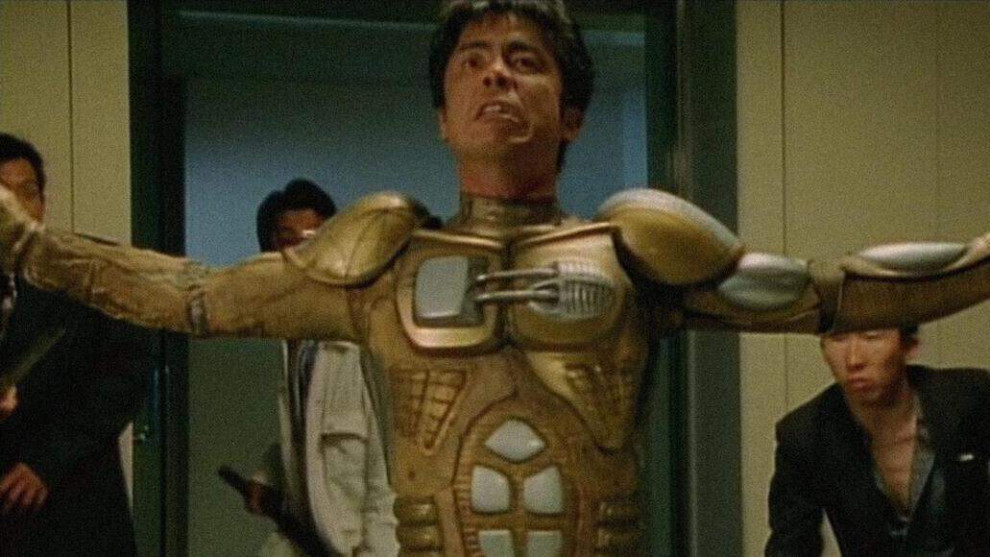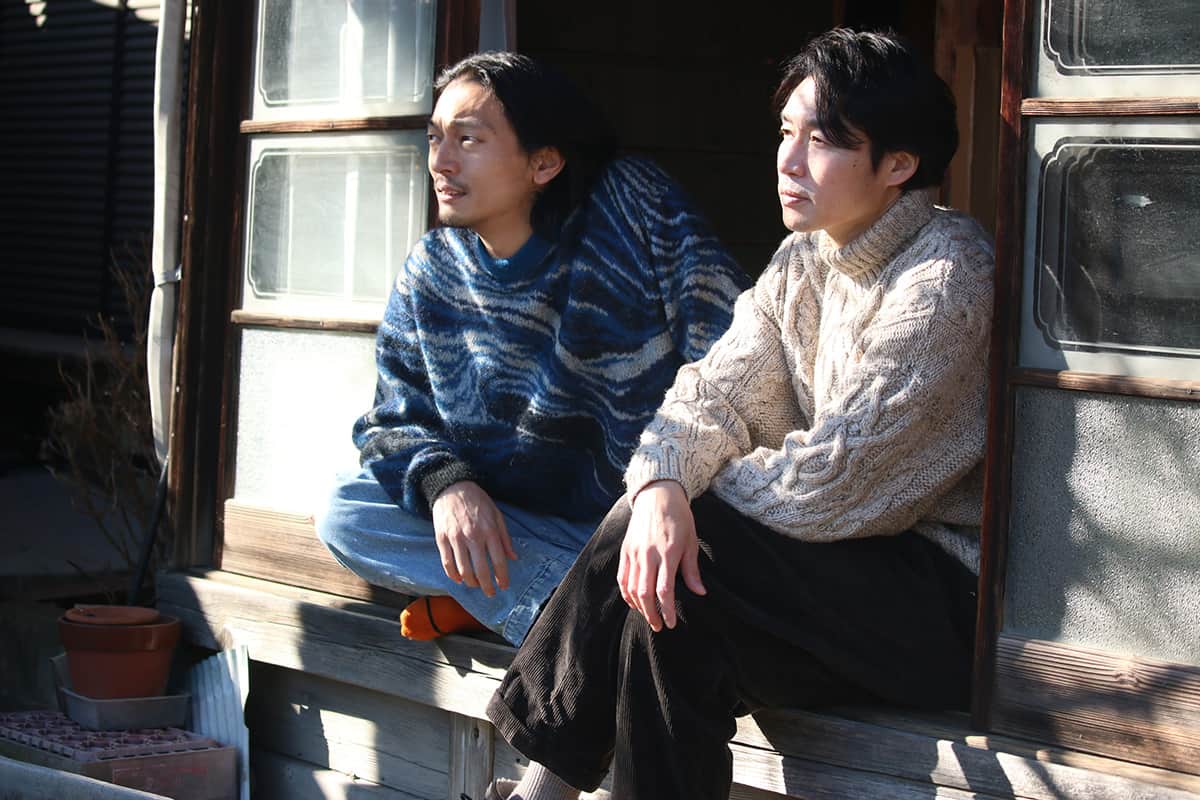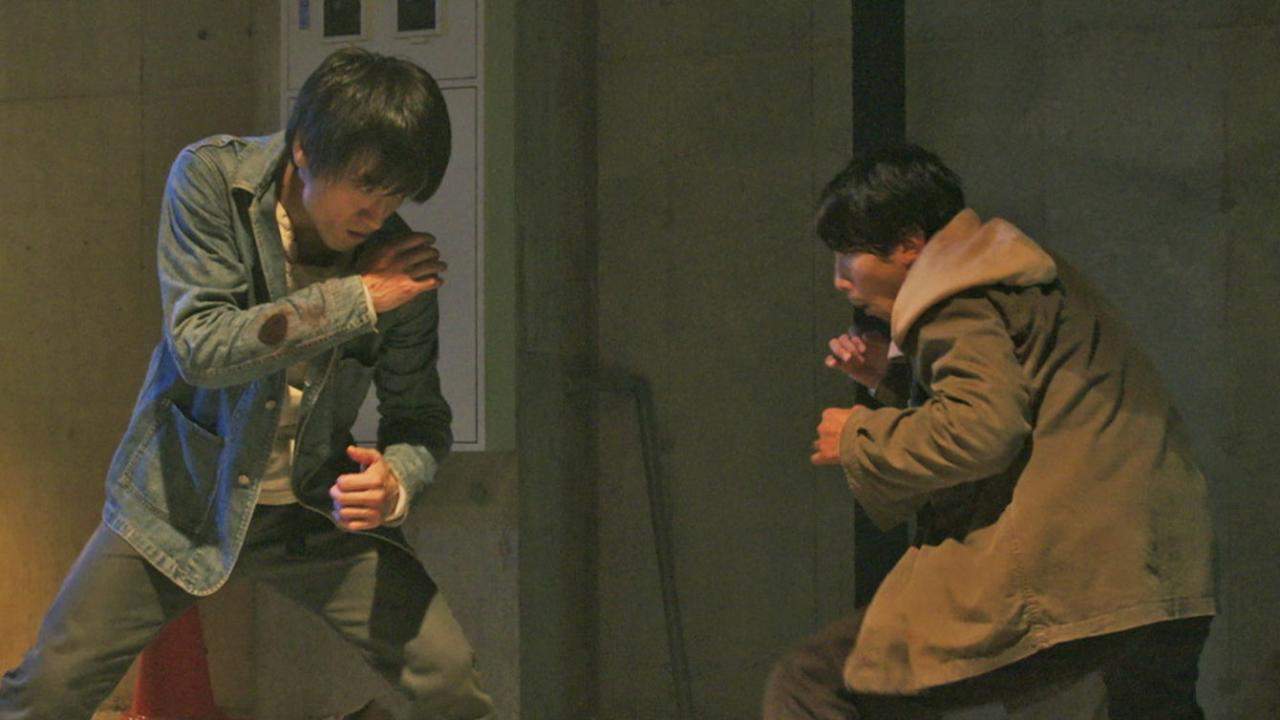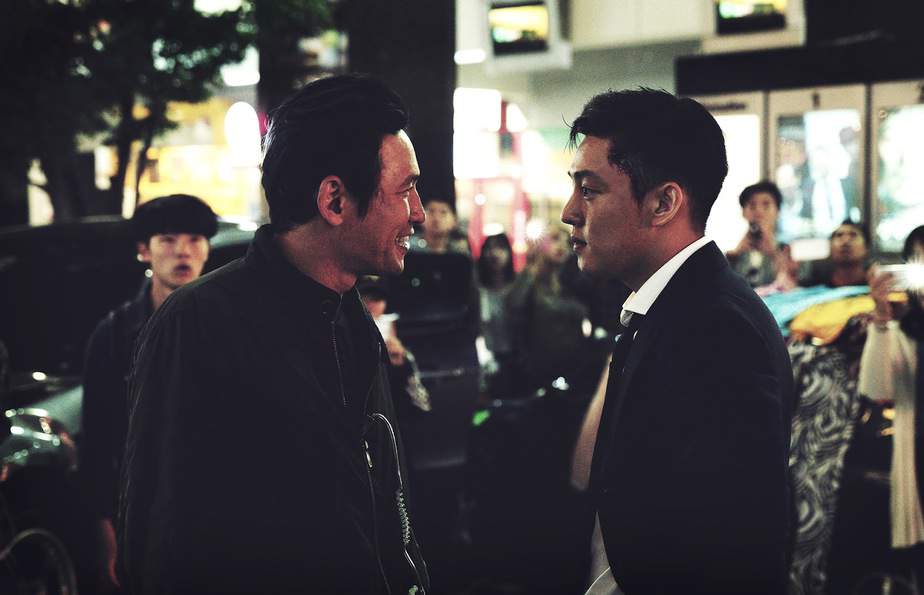“He admires you. That's why he entered the Yakuza world.”
On the DVD release of “Full Metal Yakuza” by Artsmagic, the Japanese director addresses the origin story of the film, a tale which could be seen as one of the high time of Asian economy before it collapsed, according to Miike. As he was waiting in an office of a production company for V-cinema releases which went straight to VHS, Miike was aware of a couple of pages from a script which had the title Full Metal Yakuza written on top of them. He quickly read through the pages and decided he would make the film one of his projects, one which he finally realized in 1997.
Buy This Title
Considering the genesis of the project as well as the narrative and technical aspects of many of Miike's films, it is perhaps all too easy to label his film as exploitative or even pulp at times. Even leading expert on his cinema, author Tom Mes, stresses the issue Miike's works contain many elements from exploitation and pulp, films such as “Visitor Q“, “The Happiness of the Katakuris” and “Ichi The Killer” even embrace them. Undoubtedly, a film such as Full Metal Yakuza fulfills the criteria of exploitation as it uses two popular themes, the yakuza film and the topic of robots as known from movies like Paul Verhoeven's “Robocop”, a well-known scheme for many of the cheap and fast produced films of V-cinema. However, if one looks closely, Miike does more than just the usual formula of a movie produced for the shelves of video rentals where it will surely be one in a million. One might say Miike has made it his unique skill to combine the characteristics of the kind of cinema in which he made his first steps as director in the early 1990s, but also his observations on Japanese society, politics and, especially, his topics of (cultural) rootlessness and outsiders.
Apart from this, Mes emphasizes repeatedly, one has to look very closely and thoroughly to find someone with the same approach in filmmaking while also being very entertaining.
Keisuke Hagane (Tsuyoshi Ujiki) has joined the yakuza out of respect and admiration for boss Tosa (Takeshi Ceasar), deputy chief of the powerful Mitsumi clan. After his boss has to go to jail serving a sentence because of assault and murder, Hagane climbs up the ranks while also finding out about his poor skills as a gangster. Since he is too afraid to use his gun, threaten people and is even pathetic in bed (“limp dick as always”) his position within the clan becomes embarrassing until the day his role model Tosa is released from prison. In an assassination attempt soon after Tosa's return home, he and Hagane are killed in the bullets of the attackers.
As he opens his eyes again, Hagane finds himself in the laboratory of scientist Genpaku Hiraga (Tomorowo Taguchi). Because his experiments with the human body force him to look for fresh corpses, he was sold the bodies of Hagane and Tosa, which he re-arranged inside a robotic suit making Hagane nearly indestructible but also susceptible to overheating when under stress. Equipped with the armor as well as most of the body parts from his former boss, especially his impressive looking dragon tattoo, Hagane plans to take revenge on those who have betrayed him and Tosa.
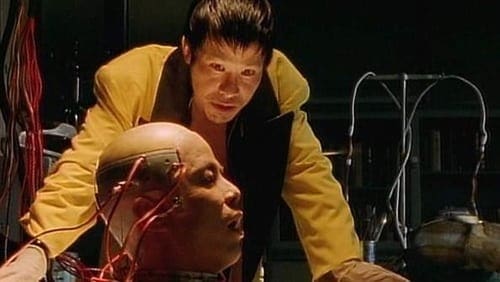
After one bloody killing spree through the ranks of those who were responsible for the assassination, Hagane seeks refuge in the solitude of a ramshackle beach hut he has built himself out of scavenged metal parts. Seemingly waiting for something to happen, to calm down, maybe also to cope with the unbelievable situation he is in now he observes the waves of the ocean and the grave of his former boss which is close by. One day, he is visited by Yukari (Shoko Nakahara), Tosa' girlfriend, who talks to him remarking how much he reminds her of Tosa, his way of moving, his arms and the way he holds her. Confessing she has been unable to find anyone to replace Tosa as her lover, she pleads Hagane to make love to her, maybe make her forget about him, also himself since both of them feel the same connection towards Tosa, she says.
With “Full Metal Yakuza”, Takashi Miike supports the definition of his cinema as one of creative surprises. After a turbulent first third, the film completely changes its tone within the narrative, the unexpected drama about two people unable to let go of their past, one person they loved and adored is one of these surprises for the viewer which the films of Miike has so many of. Nakahara and Uijiki both support the personal dilemma of both their characters, one being still in love with Tosa and the other one regarding him as everything he wanted to be as a man, not merely as yakuza. There is a desperation in their dialogue, their wish to finally be able to let go with the irony of course, being Hagane of all people is physically unable to do so.
Regarding the metal armor of his as more than just the science fiction gimmick, it also represents Hagane's ideal image of a man, a person of strength and with the correct physical attributes to count as masculine. However, allowing his character, even for a brief moment, to question whether this is really him and not just some “monster”.
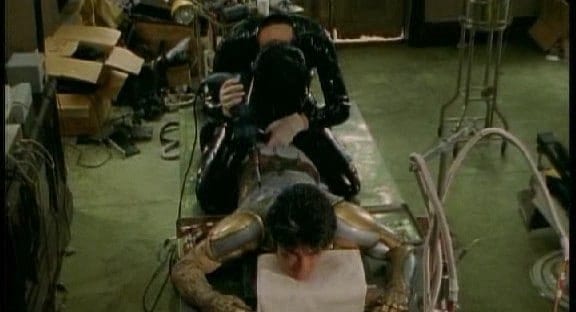
Miike's male protagonists are nearly always occupied with either inferiority complexes, inability in some way or their exaggerated images of what they want to be. Marked as outsiders by their character traits, they do everything in their power to obtain what they want to be. For Hagane, being a man like his boss is the ultimate goal in life, in many ways his status can be compared to the family's father in “Visitor Q”, another failed male in the work of Takashi Miike. Tom Mes explains Miike uses juxtaposition to show the wish or the ideal and the present on the other hand just like in one of the early shots in which Hagane stares at Tosa while he is preparing for an attack, cleaning his katana and moving his muscles under the dragon tattoo on his back.
Of course, there is also a certain sense of satire. Most of the males in “Full Metal Yakuza” are either gangsters or morally corrupt, there is no loyalty among them as they would rather kill each other than leave an opportunity to make money or gain power unused. Miike uses the exploitative and admittedly silly Frankenstein-esque twist in the script and enhances it even further, adding elements such as Hagane finding out about his genitals being better equipped than the version of his old self or the fact he has to eat metal parts to maintain proper functioning. The violence is, perhaps one trademark for the cinema of Miike, at times extreme, especially when Hagane uses his armor to his advantage. However, even with this amount of gore it keeps a certain comic-like quality to it, since maintaining a status among a group of alpha-males such as these comes along with fighting them off first, in the most brutal way possible. Just like in his later feature “Ichi-The Killer”, in which Miike would master the use of violence as a means to characterize a protagonist, brutality is now part of the male-world which Hagane has entered.
“Full Metal Yakuza” is on the surface as rather exploitative, violent yakuza film mixed with science fiction. On the other hand, it is another evidence of the creativity of Miike as a director in terms of narration, characterization as well as the technological aspects of the medium. Many of these features would develop further with films like “Ichi-The Killer”, “Visitor Q” and “Audition” being superior exercises in many of the aspects Miike already uses here. Sure, some of the thoughts and ideas Miike used in the film do not play out as they should, but in the end he has the bravery to stick with them, let them happen in order to penetrate the brain of the viewer, attack him/her if necessary.
Sources:
Mes, Tom (2003) Agitator. The Cinema of Takashi Miike. FAB Press
The interview with and statements by Takeshi Miike are part of DVD release of the film by Artsmagic


